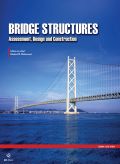Authors: Marjanishvili, S. | Mueller, K. | Fayad, F.
Article Type:
Research Article
Abstract:
Recent bridge projects have incorporated multiple hazards (i.e., blast, fire, manual sabotage, rocket-propelled grenade/mortar) as independent threats on the system. Traditional design methods to handle each threat separately are expensive and can lead to conflicting requirements. This paper will introduce the framework for a robustness-based design process. The outcomes are articulated through a series of generalized variables; topology (i.e., structural configuration relative to the site or location), geometry (i.e., layout of the structural load bearing elements), damage, and hazard intensity measures. A probabilistic framework permits consistent characterization of the inherent uncertainties through the process. Rather than consider the global
…resistance as a sliding scale in relation to a fixed load, the proposed alternative is to consider robustness as a fixed property of the system, that is, Robustness is a function of topology and geometry. Geometry and topology are absolute properties that cannot be changed without modifications to the overall system configuration. If robustness is held to be an absolute property of the system, then resilience represents the variable property that fluctuates with specific design decisions. If element failure (i.e., collapse) is avoided, damaged elements will still require repair or replacement, resulting in a temporary loss of functionality. Resistance should, therefore, be provided such that potential damage minimizes casualties and reduces the likelihood of catastrophic structural losses. The proposed expression of resilience is a function of hazard and robustness, or a function of hazard, topology and, geometry. The structural performance associated with a specific system configuration is considered as independent from the contribution of component strengthening to address a prescribed load or hazard. The resulting equation for resilience represents the specific hazard magnitude mitigated by a structural design with an assigned robustness. This definition of resilience allows engineers to quantify resilience and robustness in more certain terms and provides a basis to better assess post-event structural behavior.
Show more
Keywords: Robustness, resilience, extreme loads, fire
DOI: 10.3233/BRS-170118
Citation: Bridge Structures,
vol. 13, no. 2-3, pp. 93-100, 2017
Price: EUR 27.50





